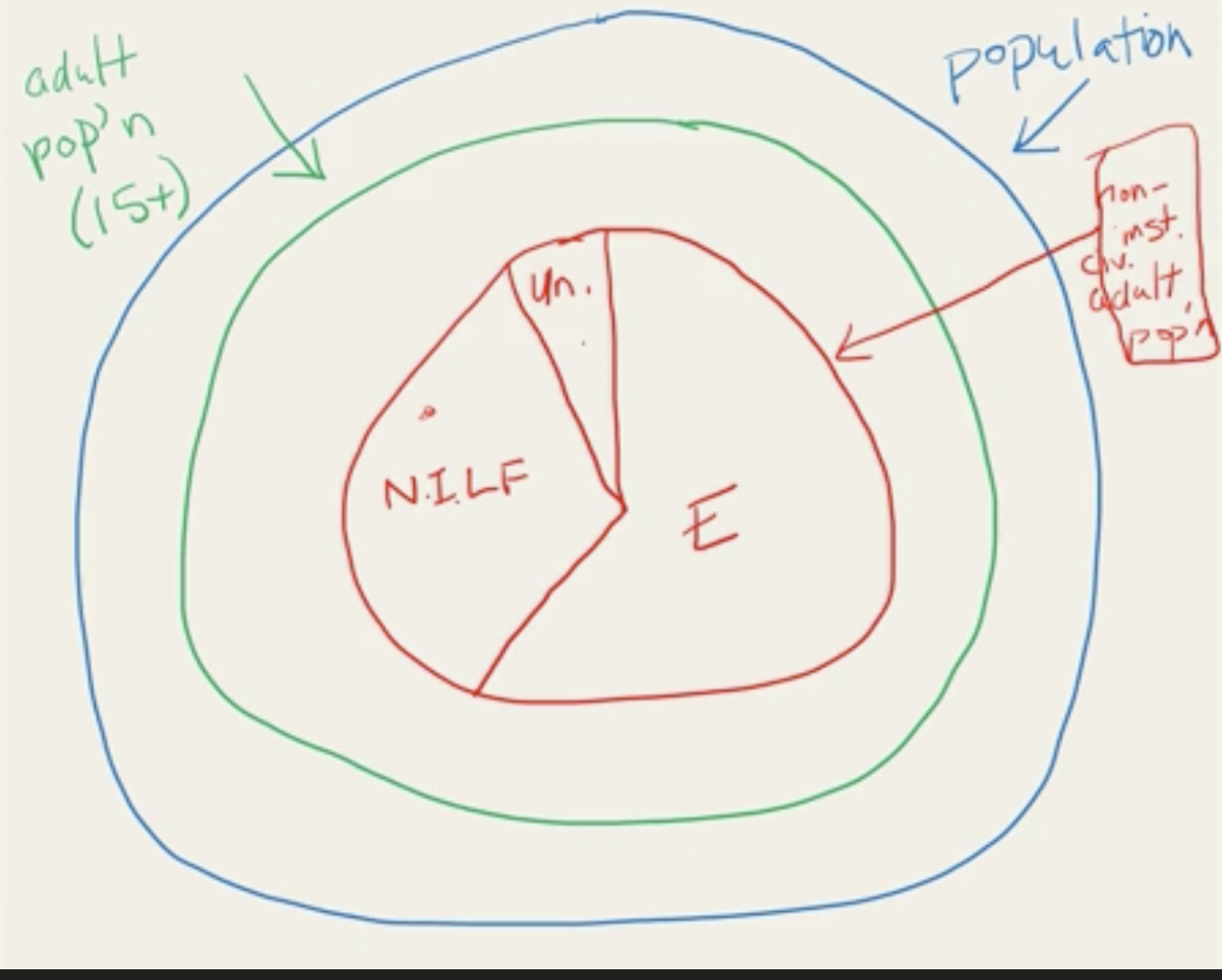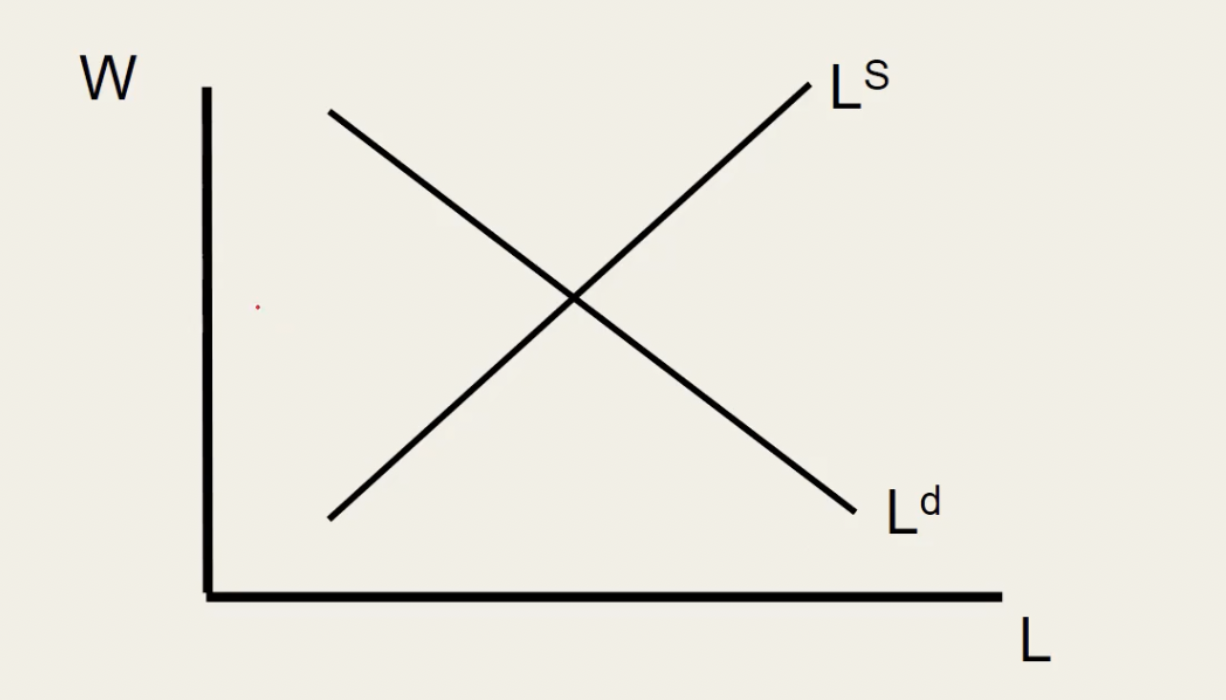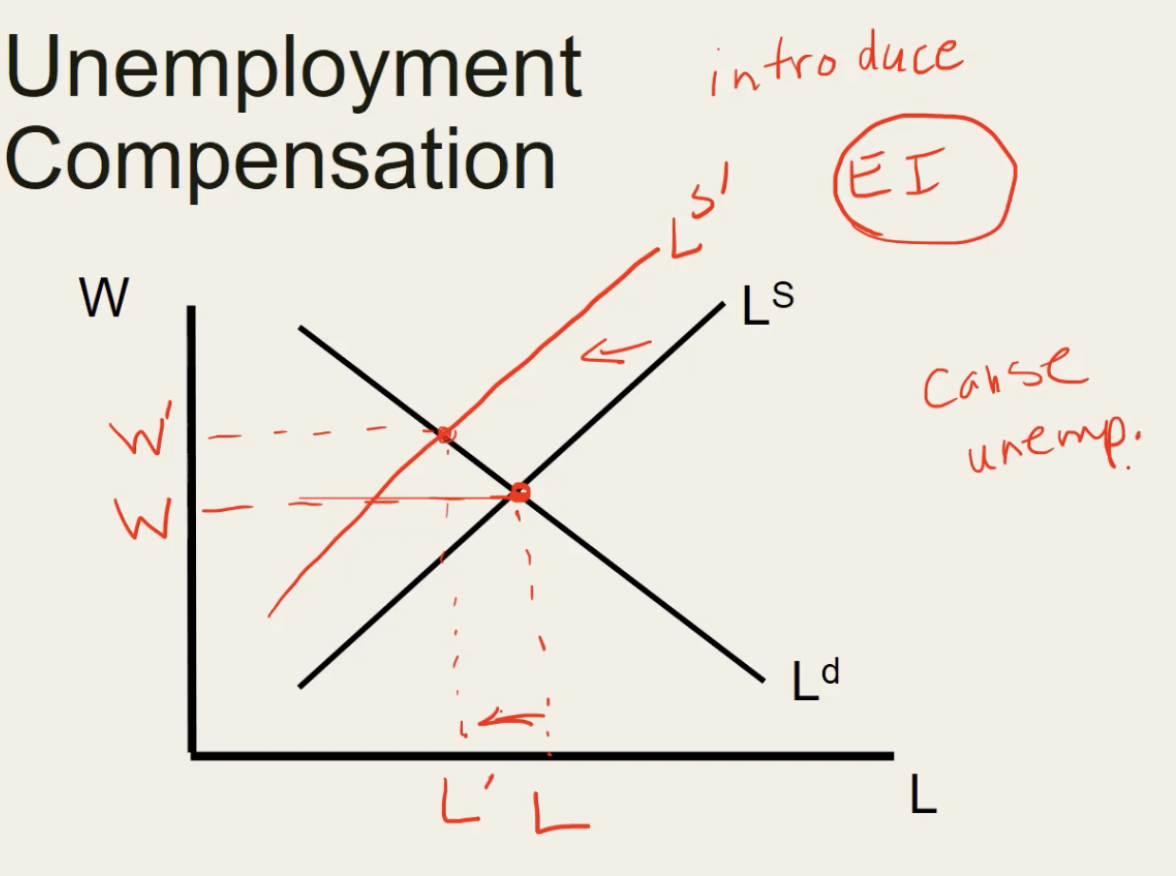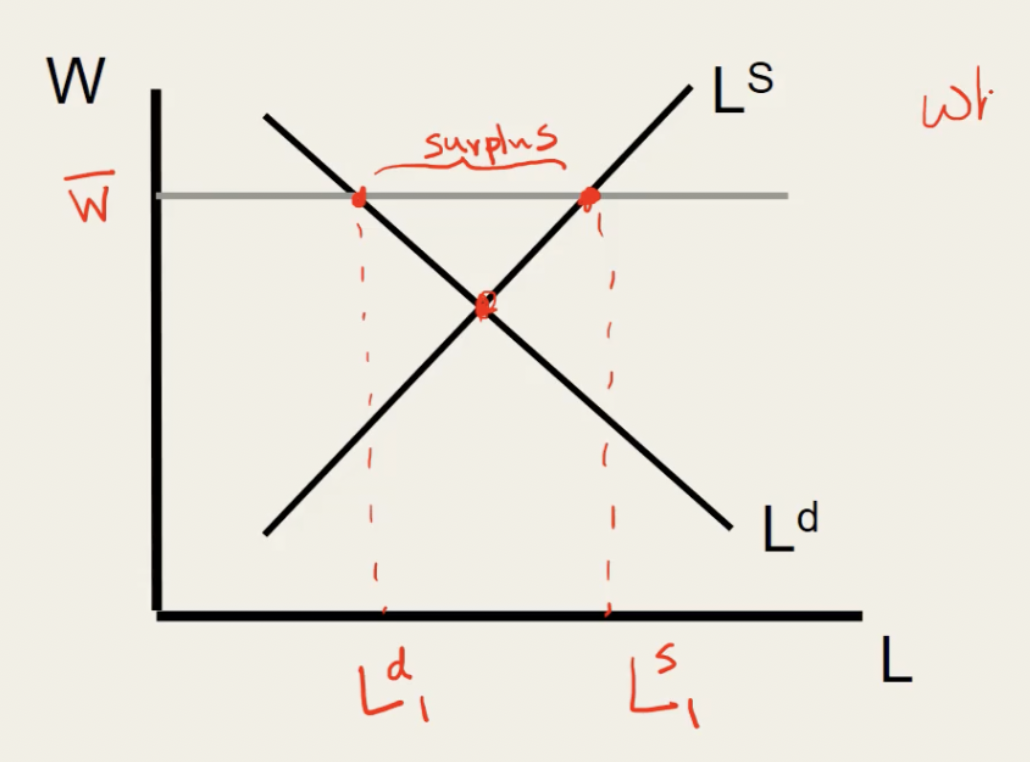ECON 1BB3: CH5
1/43
There's no tags or description
Looks like no tags are added yet.
Name | Mastery | Learn | Test | Matching | Spaced |
|---|
No study sessions yet.
44 Terms
employed
anyone who did paid work, unpaid work for family bus, or worked for themselves
unemployed
don’t have job but are willing & able to work & have looked for work in last 4 weeks
types of unemployment
frictional
structural
cyclical
seasonal
frictional unemp
short term that arises from process of matching workers w job
job search takes time
inc’s econ efficiency
devoting time = workers end up w jobs they find more satis & more production
structural unemp
arises from mismatch btwn skills/attributes worker & reqs of job
geographically e.g. lots reporter jobs in Ottawa but live in Wpg
changes legal reqs/struc e.g. Canada close cod fishing to protect stock = fishers unemp
tech changes
cyclical
lose their jobs bc rec
firms sales fall = cut back prod = lay off workers
fluctuations in rate mostly due to this
seasonal
factors i.e weather or D for products during diff times year
makes unemployment rates artificially high
e.g. ski resorts reduce hiring in summer
full emp
only remaining unemp = frictional & structural
nat rate of unemp
= frictional + structural
represents portion of LF that would be unemp if everything going well & only frictional & structural occur
not in labour force (NILF)
unable or unwilling to do paid work
given up looking
labour force (LF)
all ppl who working or looking
= emp + unemp
deter my phone survey
unemp rate =
(# unemp)/(LF) x 100
unemp rate not perfect measure joblessness bc
discouraged = count as unemp even tho willing & able
part time may want full time, doesn’t measure this & understates LM
phone survey claims may be false = overstates joblessness
labour force participation rate (LFPR) =
(LF)/(adult pop) x 100
deters amnt L that will be avail to econ
↑LFPR =
more L avail = ↑GDP
emp rate =
(# amp)/(adult pop) x 100
emp-pop ratio =
(# emp)/(adult pop) x 100
non-institutional civilian (NIC)
not in prison, nursing home, military
circle division pop, adult pop, NIC, NILD, emp, unemp

employment insurance (EI)
benefits paid to workers who find themselves unemp
labour market (LM) diagram
W = wage
L = labour
Ls = L supply = from sellers/hhs
Ld = L demand = from firms/buyers

intersection Ls & Ld
how many ppl working in market
introduce EI =
↑OC going to work
= workers want ↑W to justify entering LM
= Ls shift ←
= ↓# ppl workering
= ↓L
= unemp

minimum wage (MW)
legal min set by gov
small impact on overall unemp rate
if MW > Eqpt =
binding (Wbar)
= Q Ls > Q Ld
= surplus L
= excess S
= unemp

consumer price index (CPI)
measures overall cost of g/s for typical Canadian hh
reflects cost of living
biases that cause change CPI to overstate rate of inflation experienced by his
substitution: assumes his purchase exact same amnt each product in basket monthly
inc in quality: = inc P = inf
new product: not incl in CPI tf changes in P not captured
outlet: CPI not updated to reflect changes in where ppl buy things
value in future $ =
value in past $ x (CPI future)/(CPI past)
real var =
(nom var)/(P index) x 100
CPI =
(cost basket current yr)/(cost basket base yr) x 100
inf rate =
(CPI yr - CPI yr b4)/(CPI yr b4) x 100
CPI vs GDPdef questions
is it prod in Canada?
y = GDP n = not GDP
does a typical hh buy this?
y = CPI n = not CPI
real W =
(nom W)/(P level) x 100
real W =
nom W - inf rate
real W =
(nom W)/(CPI) x 100
interest rate
cost of borrowing money as %
nom int rate
stated int rate on loan
real int rate
corrects nom for effect inf of purchasing power of money
amnt extra buying power u pay back (or get if lender) when load repaid
real int rate =
nom int rate - inf rate
inf rate higher than expected =
borrowers pay lower real int rate (good 4 them)
lenders receive lower real int rate (bad 4 them)
mortgage
loan typically made for purchase of a house or condo
↑neg int rate =
better off
as if bank is paying u
inf > expected =
wealth moves from lenders → borrowers
inf < expected =
wealth moves from borrowers to lenders